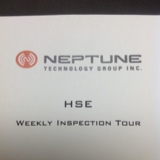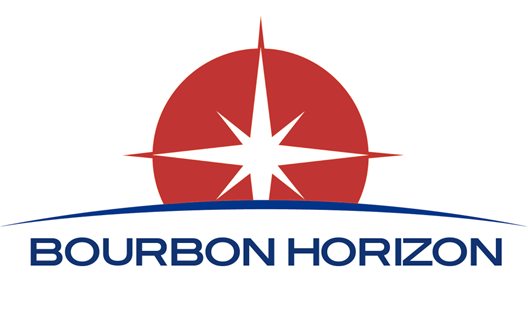Information
-
Document No.
-
Audit Title
-
Client / Site
-
Conducted on
-
Prepared by
-
Location
-
Personnel
Blank category label
-
A. NTG Personnel invited to tour:
-
A. NTG Personnel present on tour:
-
A01. Are all safety signs and warnings highly visible and easy to read?
-
B01. Are all circuit breakers accessible and labeled as to what they turn off?
-
B02. Are all cords free of any visible wear, cuts, or frays and kept clear of walkways and working spaces?
-
B03. Are all electrical cords strung so they do not hang on pipes, nails, hooks, etc.?
-
B04. Are all conduits unbroken, I damaged, and not resting in puddles?
-
B05. Are junction boxes and breaker panels free of holes, voids, and openings?
-
B06. Are extension cords used only for temporary power?
-
B07. Are all extension cords free from frays, splicing, and damage?
-
B08. Do all extension cords possess three pronged plugs?
-
B09. Is the work area free from any leaks that drip by computers or any other electrical devices?
-
B10. Is the 36" clearance maintained on all electrical boxes?
-
B11. Are external programming ports and connections available on electrical panels as needed?
-
C01. Do all telephones have emergency numbers posted nearby?
-
C02. Are all exits clearly and legibly marked?
-
C03. Are the doors that are not exits clearly marked as NOT AN EXIT?
-
C04. Is every required exit, approach area, and way of travel from the exit to the rally point maintained free of obstructions?
-
C05. Have all employees in the department been made aware of their fie evacuation routes, rally point, and severe weather shelter?
-
D01. Are all fire extinguishers clearly and legibly marked?
-
D02. Are they inspected, easily accessible, and fully charged?
-
D03. Are fire sprinkler valves clear and protected against obstructions?
-
E01. D all flammable and combustible liquid storage containers have a contents label that is clear and readable?
-
E02. Are the safety cans free from cracks, punctures, and wear?
-
E03. Are the flammable liquids stored in a fire proof cabinet?
-
E04. Are the ground/bond wires in use?
-
F01. Have the operators been reminded to inspect their air hoses daily for cracks, cuts, tears, and proper operating pressure?
-
F02. Are all air hoses in the department equipped with a side port nozzle or other noise reducing feature?
-
F03. Do all the portable power tools cords contain three pronged plugs or electrical insulation?
-
F04. Are all these cords free from frays and other damage?
-
G01. Are the employees in the department aware of the chemicals present, their exact location, and the proper PPE to use?
-
G02. Does every worker know where the MSD Sheets and SOPs are, what they're for, and how to use them?
-
G03. Have the MSD Sheets been updated for any changes in the chemicals used in the department?
-
G04. Are all containers properly labeled as to their contents and the hazards these contents present?
-
H01. Are employees in the department aware of what a lockout/tag out device looks like and for what it is used?
-
H02. Are lockout/tag out procedures posted on each machine?
-
H03. Are lockout/ragout audits being performed consistently?
-
i01. Is the department free of any presence sensing guards? If not, test them now. Are they operating properly?
-
i02. Are all safety interlocks operational and labeled?
-
i03. Are all machines or manufacturing areas adequately guarded?
-
i04. Are pedestal grinders securely and properly adjusted?
-
i05. Are sound enclosures closed and in OEM condition?
-
i06. Are there any new machines in the area? If so has an HSE Operation Certification been completed?
-
J01. Do all aisles, loading docks, doorways, turns, and passages have safe clearance for equipment and material?
-
J02. Are storage areas clean, dry, and free of tripping/slipping hazards?
-
K01. Are data plate and load ratings present and clearly visible on all forklifts?
-
K02. Is each operator using his/her checklist daily?
-
K03. Are all current forklift operators trained and certified?
-
L01. Are all areas clean to the extent that the nature of the work allows?
-
L02. Are floors dry / drains operating?
-
L03. Are trash containers emptied and floor sweepings removed?
-
M01. Are ladder weight capacities clearly and legibly labeled?
-
M02. Is the ladder tagged for inspection and current?
-
M03. Are the top two steps of all stepladders labeled - no stepping here?
-
M04. Are the rungs tight in the joints of the side rails and free of grease and oil?
-
M05. Are the feet of the ladder slip resistant, free of grease, and in good condition?
-
M06. Are floor surfaces level with no potential trip hazards?
-
N01. The following PPE is required on some operations in this area: ear plugs, gloves, safety glasses. Is PPE consistently worn?
-
N02. Is the PPE prescribed for the department sufficient?
-
O01. Was the previous month's safety meeting requirement met?
-
P01. Were there any other hazardous actions, situations, or conditions observed that are not mentioned in the body of this inspection checklist?












